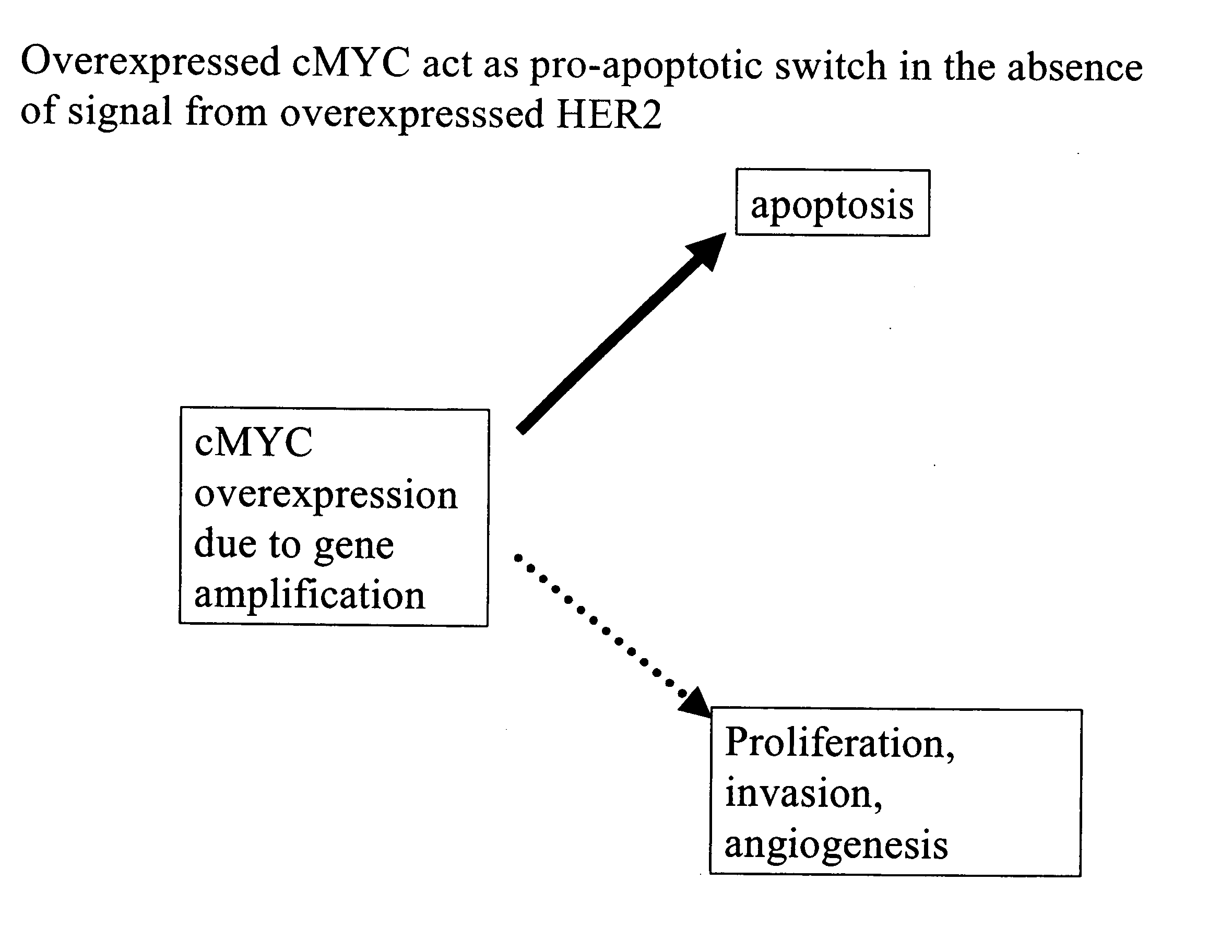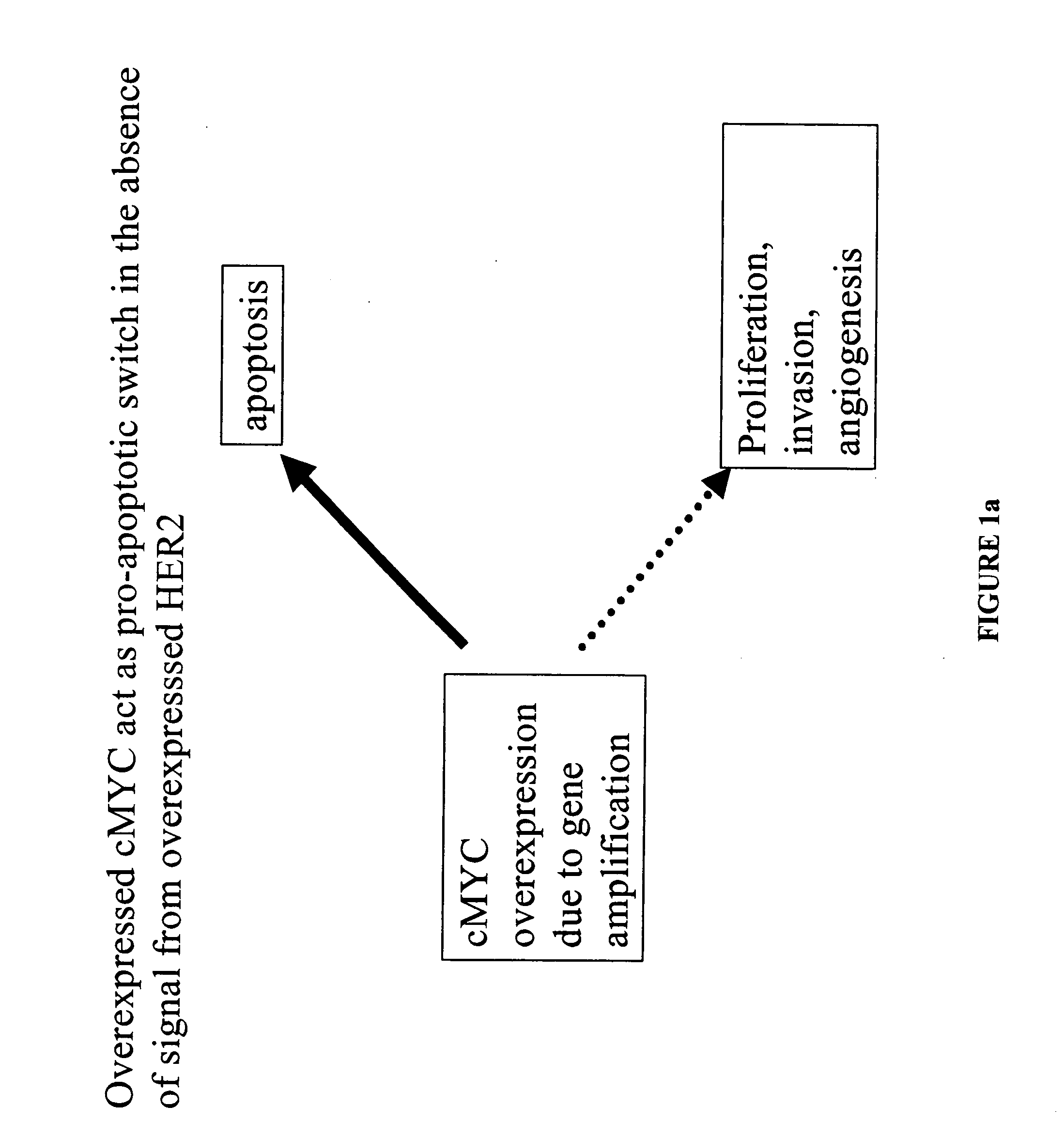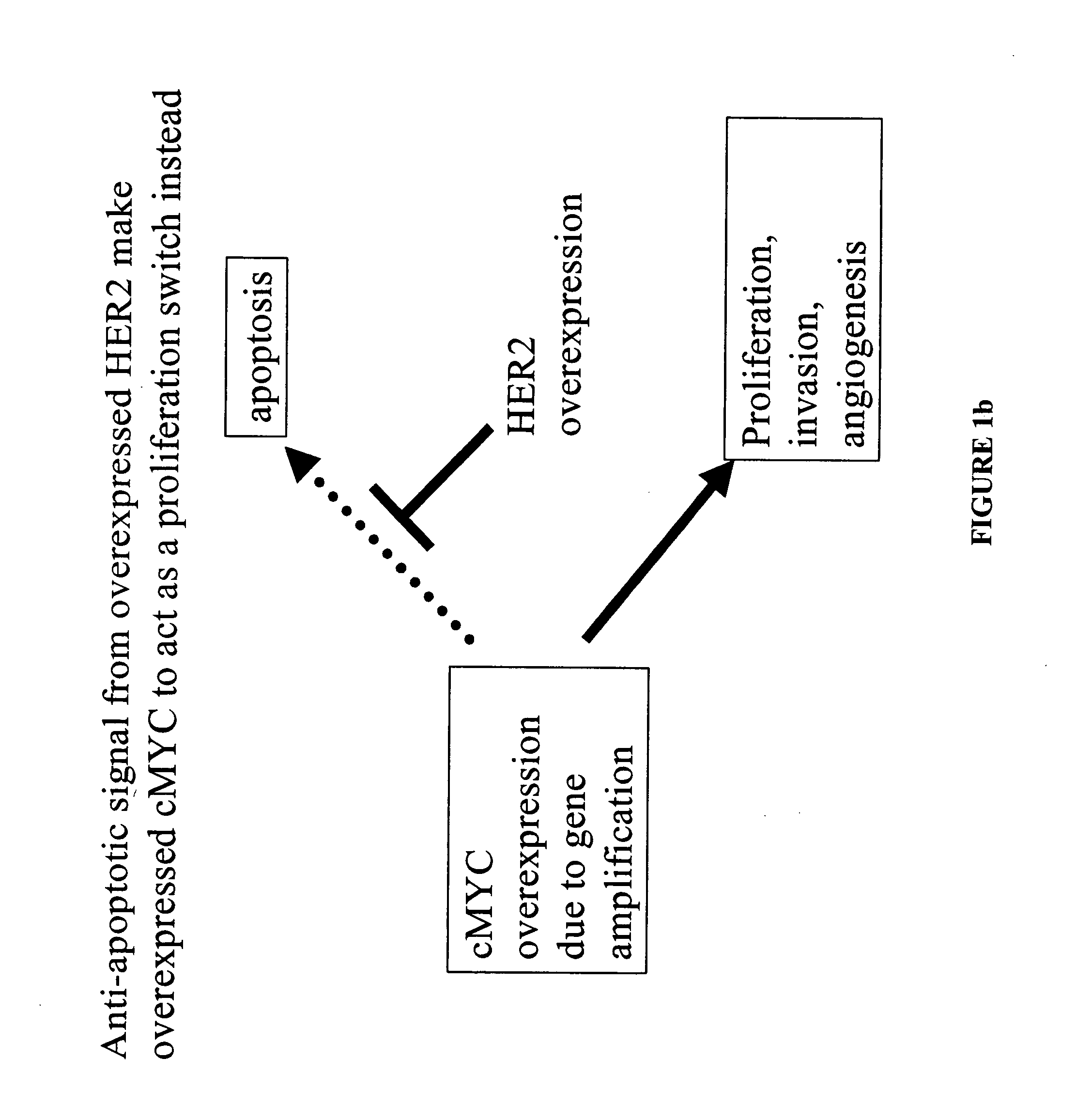Identification and use of prognostic and predictive markers in cancer treatment
a predictive marker and cancer treatment technology, applied in the field of cancer treatment prognostic and predictive markers, can solve the problems of no study, high cost of array cgh screening, severe toxicity of chemotherapy, etc., and achieve the effect of poor prognosis of breast cancer patients, and reducing cancer recurrence ra
- Summary
- Abstract
- Description
- Claims
- Application Information
AI Technical Summary
Benefits of technology
Problems solved by technology
Method used
Image
Examples
Embodiment Construction
[0052] One reason for the high cost of commercially available FISH probes is the cost and difficulty of directly fluorescence labeling bacterial artificial clones (BAC) representing the probes. This disclosure provides a method for fluorescently labeling BAC clones representing known amplicons efficiently by combining a series of whole genome amplification methods and an efficient FISH method for paraffin embedded tissue which has been archived more than 10 years (see overview in FIG. 2). This labeling and FISH method is a log order less expensive as compared to commercially available probes. Using paraffin block tissue samples for over 30,000 breast and colon cancer cases that are all annotated with clinical follow up information and treatment received provided a unique source for clinical correlative science studies. Combining the FISH method with tissue micro array (TMA) allows screening of more than 100 cases using a single microscopic section making screening of multiple amplic...
PUM
| Property | Measurement | Unit |
|---|---|---|
| Concentration | aaaaa | aaaaa |
| Acidity | aaaaa | aaaaa |
| Therapeutic | aaaaa | aaaaa |
Abstract
Description
Claims
Application Information
 Login to View More
Login to View More - R&D
- Intellectual Property
- Life Sciences
- Materials
- Tech Scout
- Unparalleled Data Quality
- Higher Quality Content
- 60% Fewer Hallucinations
Browse by: Latest US Patents, China's latest patents, Technical Efficacy Thesaurus, Application Domain, Technology Topic, Popular Technical Reports.
© 2025 PatSnap. All rights reserved.Legal|Privacy policy|Modern Slavery Act Transparency Statement|Sitemap|About US| Contact US: help@patsnap.com



